
Celebration of Lives of Men Who Made a Big Difference
Men who have stood fast and lived lives worthy of emulation by the generations that follow.
Gilbert S.C. Keith-Agaran
It is daunting to follow the iconic generation of Hawai‘i Filipinos. They were the trailblazers. Largely the first- or second-generation island-born children from the plantation workers who first arrived on these islands during the first half of the previous century, they opened opportunities for the ones that followed. British Theologian Adam Clarke observed: “It is to be regretted that few persons who have arrived at any degree of eminence or fame, have written Memorials of themselves, at least such as have embraced their private as well as their public life.” In early June, the community recognized and memorialized two of them at the celebration of lives for Joshua C. Agsalud (90 years old) and H. Wayne Mendoza (80 years old).
Both Agsalud and Mendoza carved out influential niches among Hawai‘i’s Filipino and the larger Hawai‘i communities—Agsalud as an educator, and influential advisor and able and trusted administrator for several Hawai‘i Governors; Mendoza as a pioneer in preserving Philippine folk dances as a teacher and practitioner while also holding a full-time job in city government. One cut a path for Filipinos who wanted to serve the public while the other provided a creative outlet for maintaining cultural traditions in a new homeland.
As might be expected for pre-Statehood Filipinos, the two have similar backgrounds although born a decade apart.
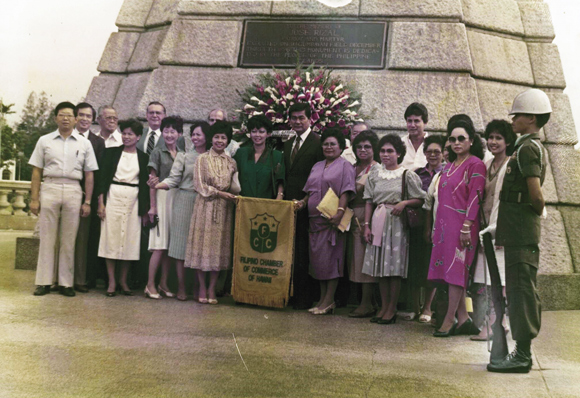
Image courtesy Filipino Chamber of Commerce of Hawai‘i
Agsalud’s immigrant parents Basilio Fernandez Agsalud and Luciana Castro Agsalud hailed originally from Ilocos Norte. Agsalud was born in the O‘ahu Sugar Company hospital in 1933. The family lived close to the Waipahu Sugar Mill and young Joshua grew up on the then-thriving sugar plantation.
Mendoza also traced his roots to Ilocos Norte, son of Badocqueño Alejandro Pagdilao Mendoza and Irene Setsuko Mabara. Born in the summer after the U.S. entry into World War II, Mendoza held a government job for fifty-nine years (six years with the State Department of Transportation and forty-five years with the City and County of Honolulu).
Both men served in the U.S. Army—Mendoza as an infantryman in the mid-1960s, while the University of Hawai‘i (UH) ROTC-trained Agsalud rose to the rank of Lieutenant during Cold War service in Europe (he would later be a Captain in the reserves). An eyewitness to the Japanese attack on Pearl Harbor as a child, Agsalud developed a lifelong passion for military history.
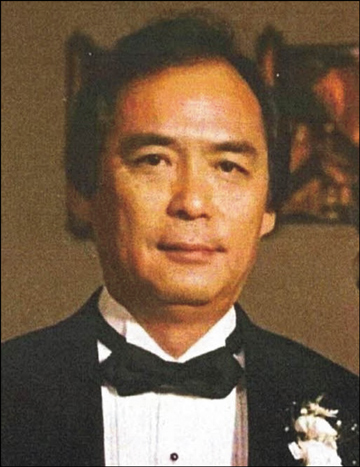
Agsalud attended August Ahrens Elementary School and graduated from Waipahu High School. As recounted in the State Senate certificate honoring Agsalud, “he once observed the ‘public schools tend to serve as tools for the national purpose … [they] made me a confident American,’ a creed that would guide his career pursuits following his graduation from the University of Hawai‘i …”
Agsalud taught for a time and rose to become a public-school principal for the Hawai‘i Department of Education (DOE) after earning a UH Master of Arts in Education. Initially vice principal at Farrington High School in 1963, Agsalud would be promoted two years later to principal, the first of Filipino ancestry at a campus in the heart of one of the largest community of Filipinos on O‘ahu. After moving to Kaimukī High, Agsalud and his family left the islands for a time on a prestigious education fellowship. Agsalud would earn a doctorate in education from Wayne State (during his Detroit graduate school years with his family, Agsalud became a lifelong Lions and Tigers fan).
Upon moving home, now—Dr. Agsalud took the Kalani High School job. The State Senate found it significant that while at Kalani, he was one of four public school principals in the Honolulu area who directed the withdrawal of their schools from the urban Interscholastic League of Honolulu. Instead, the schools aligned with the largely rural O‘ahu Interscholastic Association, creating the all-public-school sports federation.
Agsalud would later ably hold a district superintendent post for the DOE.
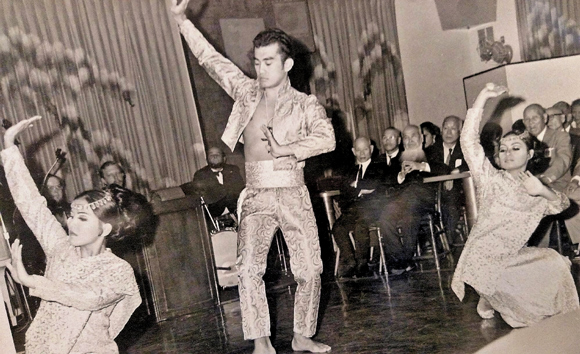
Image courtesy Pearl of the Orient Dance Company
Mendoza developed an interest in Philippine folk dance as a teenager, dancing with Tito Cezar. In 1958, Mendoza joined the Pearl of the Orient Dance Company, the local troupe that performed on the S.S. Wilson and S.S. Cleveland. The Pearl of the Orient would later perform during dinner shows titled “A Night in the Philippines” at the Outrigger Hotel and later at the Royal Hawaiian Hotel’s Monarch Room.
After military service, Mendoza returned to Hawai‘i, bringing his knowledge of Philippine folk dance that he received from Francisca Reyes Aquino, the Philippine’s foremost authority of folk dances.
Like Agsalud, Mendoza was also an educator. In 1975, he began a forty-five-year teaching career as a Lecturer/Instructor in Philippine Folk Dances in the University of Hawai‘i at Mānoa’s Theater and Dance Department. He also served as part of UH’s statewide Cultural Extension Program and UH Outreach College, traveling throughout the islands to share his knowledge and expertise at schools, libraries, senior centers, and nursing homes.
“We met Wayne around 1993,” recalls Elsie Saribay of Bailes de Pilipinas, one of Mendoza’s seven officially recognized apprentices. “At that time, we were taking Filipino folk-dance lessons from the late Aggie Cabebe. Aggie told us about Wayne, and what a wonderful dancer and choreographer he was, and that we should invite him over to teach us new dances.”
“That was the beginning of a lifelong friendship with Mr. H. Wayne Mendoza!” Saribay says. “He taught us many new folk dances that he choreographed especially for us. We learned the correct way to hold our arms positions and feet to look more professional.”
“I also took classes from him during the time he taught Filipino folk dance at U.H. Mānoa,” Lawrence Pascua, another official Mendoza apprentice, remembers. “A few of those close to him after Wednesday classes used to join him for a late snack following the instruction. He would pay for us if we were short on cash. He could play the piano, as he did during class while we danced to his music. Nuance and precision were his forté when he taught. I don’t know if there’s anything that he didn’t know how to do.”
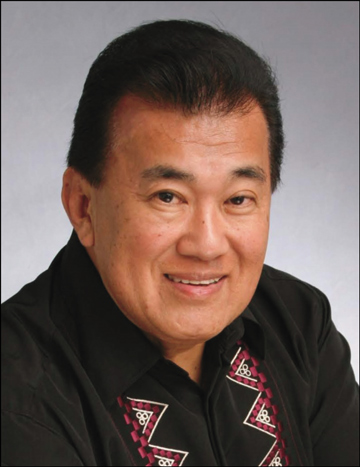
Mendoza would also hold workshops at mainland universities, including George Mason University, University of Iowa, Loyola Marymount University and the University of Virginia. In the 1980s, Mendoza formed his own dance troupe—Himigbayan, or “Song of the Country.” In 1982, the Hawai‘i State Foundation on Culture and the Arts sponsored Mendoza’s studying in the Philippines at the Bayanihan Cultural Folk Arts Center and the Philippine Folk Arts Center.
“H. Wayne Mendoza was a great man, Filipino folk-dance instructor and choreographer, humorist, artistic director and more … he was a great friend to all,” Pascua, who now heads his own dance troupe, La Galería: Compañía Baile Filipino, recounted. “He was a modern-day renaissance man, as one might call it.”
“Wayne was an extraordinary man; he was our mentor and good friend for 20-plus years,” Saribay declares. “We brought Wayne over several times a year to teach us new dances. He loved coming to Maui to relax, teach and eat delicious food. We would have potluck dinners after our lessons. He loved pork rib adobo, dinengdeng, fish, pinakbet, and many others. He loved his green mangoes with alamang, and the ripe hayden mango with his dinner to name a few.”
Saribay and Pascua also remember his sense of humor. “After dinner, Wayne would tell jokes, he knew so many and was witty with his words,” Saribay remembers. “He made us laugh so much! Wayne will always be with us in spirit as we continue to dance the dances, he taught us. We have many priceless memories of him that we will never forget.”
“He was a fun guy to be around, and always had something to say, and always had something to make fun about,” adds Pascua. “He could also do all sorts of other types of dance styles like the cha-cha, salsa, merengue, etc. He tried to teach me salsa, but I guess that was not in the cards for me; but I liked seeing him go at it with Tessie Fabia-Cabral who was another one of his astute students.”
“I knew him as a choreographer and dance instructor of Pearl of the Orient Dance Company based in Honolulu where I learned a great many dances and choreographies to be danced professionally on almost any stage,” Pascua remembers. “He designed and fabricated the costumes that we wore … . He could crochet … I have a blue cap and many cleansing cloths in my house to prove it. They work better than any traditional sponge as you could poke the tines of your fork through the material to get in between each tooth.”

Image courtesy Agsalud ‘Ohana
Dr. Agsalud’s administrative record led Governor George R. Ariyoshi to appoint him as his Director of the Department of Labor and Industrial Relations (DLIR), where he served for all three of Ariyoshi terms, leading that agency in meeting mandates that ranged from unemployment insurance to job training. As Labor Director, Dr. Agsalud played an instrumental role in protecting Hawai‘i’s prepaid health care from preemption by the broad federal Employee Income Retirement Security Act of 1974 (ERISA) regulations, assisted by a young deputy attorney general (and future Hawai‘i Supreme Court Justice) Mario Ramil.
With the Ariyoshi administration’s fourteen years ending, Dr. Agsalud accepted a job as Vice President for University Relations at the University of Hawai‘i. But his Mānoa stint proved brief; new Governor John Waihe‘e tapped the well-regarded Agsalud as Administrative Director. As the top advisor to the Governor, Dr. Agsalud frequently served as a spokesperson for the administration and intermediary on controversial issues, and certainly was the highest profile Filipino in the Waihe‘e Administration.
Dr. Agsalud was also an astute political campaign manager. He was the architect of the Filipinos for Ariyoshi, Filipinos for Waihe‘e, and Filipinos for Waihe‘e-Cayetano committees. In 1978, during the Ariyoshi vs. Fasi gubernatorial campaign, Agsalud organized a massive campaign by the Filipino community at the Blaisdell, with approximately 7,000 in attendance and catered by a then-relatively-unknown Kalihi restaurant called Elena’s. During the 1998 re-election campaign, Cayetano grassroots coordinator Lloyd Nekoba assigned Alfredo Evangelista and a second young Filipino attorney to work under Dr. Agsalud. Dr. Agsalud tasked them with developing a plan for the Filipino campaign with Waihe‘e staffers Mario Ramil and Alfred Lardizabal so all Filipino volunteers on the campaign would be singing from the same page. At Dr. Agsalud’s services, former Governor Waihe‘e admitted he didn’t know Agsalud prior to his campaign for Lt. Governor but leaned on “PB&C,” his Filipino buddies who highly recommended Agsalud. “PB&C” stood for Deputy Attorney Generals Chris Pablo and Robin Campaniano and realtor Joseph Blanco, who were active in the Filipino community, especially the Filipino Chamber of Commerce of Hawai‘i.
As recorded in the Senate certificate, Agsalud once said, “The sugar plantation brought my parents to Hawai‘i. There is no other place that I would have liked to be born, grow up, and live. My parents never thought of going back. While the plantation barely provided them with a living, they sensed the future would be better for their children.”
Pascua concludes, “I learned a lot of practical things from Manong Wayne and he was like a second father to me. I surely do miss that I am not able to glean anymore of his wisdom as God now has him working as a clerk in Heaven.”
“But,” Pascua notes, “he did leave me with his spirit of learning, beyond what he could teach me. He inspired me in saying, ‘As long as you know the basic dance, you can choreograph it however you like, as long as you know the essence of each dance.’ He’d gotten that idea from the late Ramon Obusan. And because I learned all the fundamental dance steps from him; I can also learn dances from Francisca Reyes Aquino’s volumes worth of books. Thank you, Wayne, you are sorely missed.”
Honolulu Mayor Rick Blangiardi proclaimed June 3, 2023 as H. Wayne Mendoza Day in the City and County of Honolulu to “celebrate the life and legacy of H. Wayne Mendoza, honor his service, and commemorate his incredible and enduring impact on our community.”
Both men’s contributions in perpetuating Filipino culture and carving out opportunities for future generations were shaped by their backgrounds, rooted in their families and communities. The next generations have a lot to live up to …
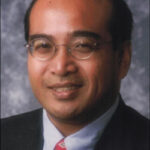 Gilbert Keith-Agaran has served in the Legislature since 2009, representing Central Maui in the House of Representatives and State Senate. As a young attorney, he worked with Alfredo Evangelista on the Waihe‘e-Cayetano re-election campaign. Evangelista danced under Aggie Cabebe, who brought in Wayne Mendoza to teach the youth of Good Shepherd Church. Evangelista occasionally performs at Filipino folk dances at community gatherings.
Gilbert Keith-Agaran has served in the Legislature since 2009, representing Central Maui in the House of Representatives and State Senate. As a young attorney, he worked with Alfredo Evangelista on the Waihe‘e-Cayetano re-election campaign. Evangelista danced under Aggie Cabebe, who brought in Wayne Mendoza to teach the youth of Good Shepherd Church. Evangelista occasionally performs at Filipino folk dances at community gatherings.
